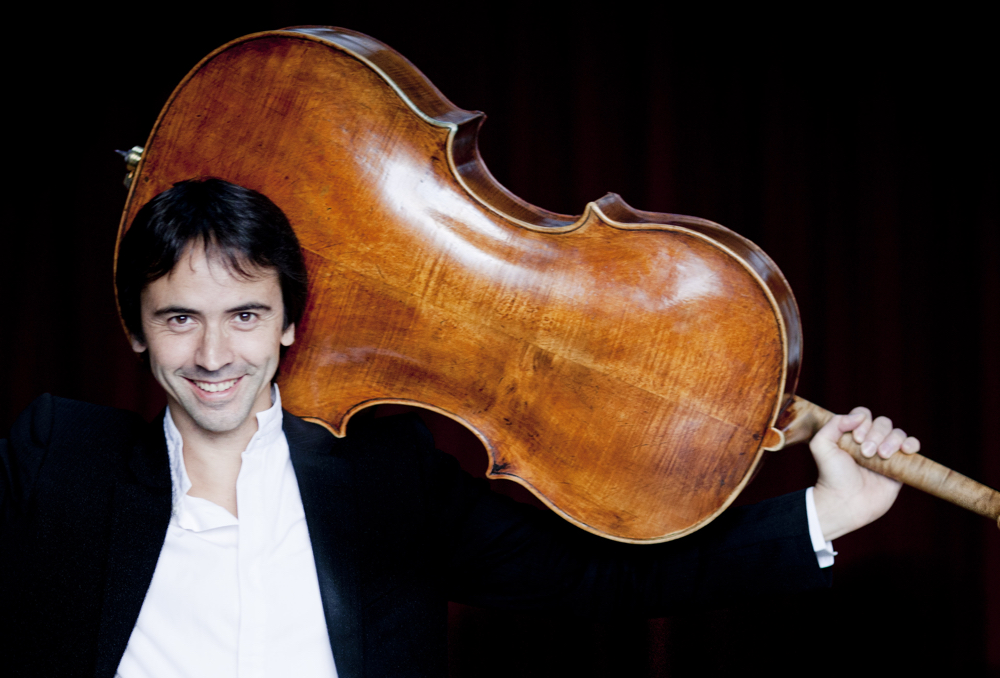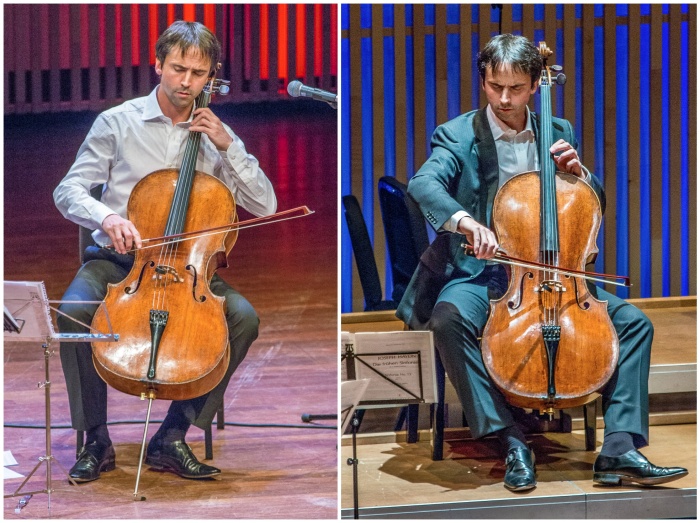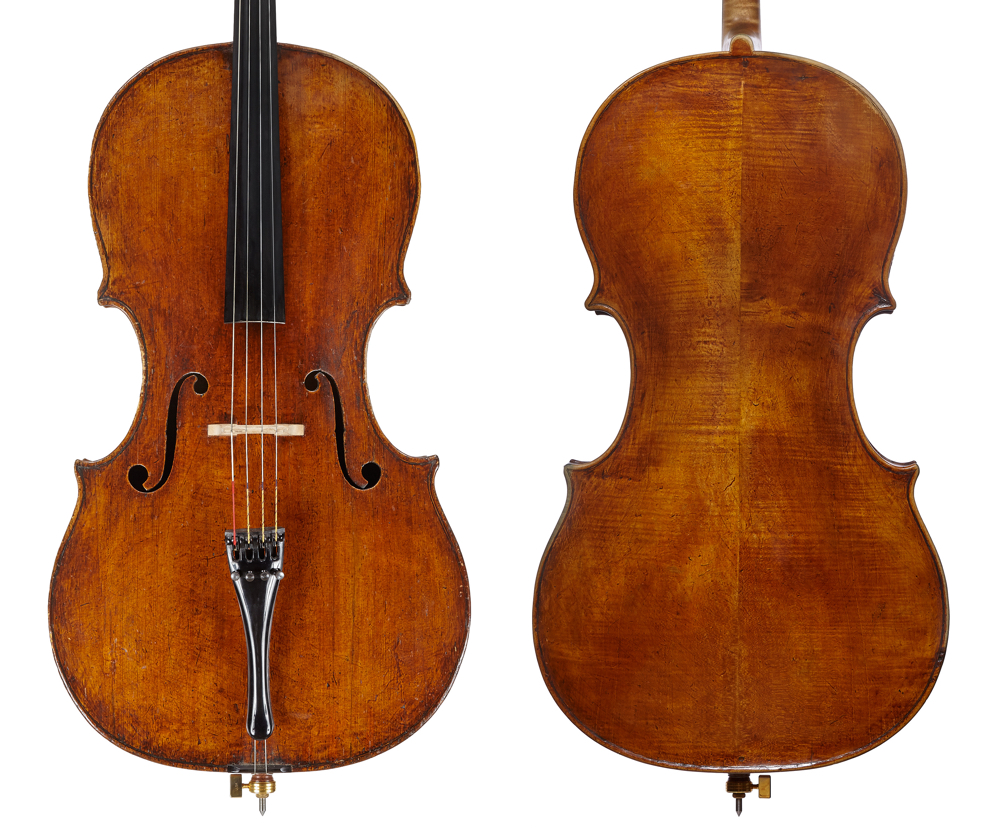It took Jean-Guihen Queyras more than a year to find the Gioffredo Cappa cello he now plays. He remembers: ‘It was tiring and difficult. It was like trying to get into a relationship. “Let’s spend a week together.” “No, we’re not made for each other.”’ He was offered the chance to look for an instrument by the Mécénat Musical Société Générale. Whenever he played a concert he would contact local dealers and makers to find out what they had, try it out, and sometimes perform on it in the actual concert.
He learnt much from the process: ‘It was very interesting, especially for me to define what my sound is and what I’m looking for in the sound of a cello. I also found it interesting how two instruments can have two completely different personalities and how the different woods, shapes, ages and sounds are all part of that. It’s amazing the influence these aspects have on your playing and your musicianship.’

Queyras with his 1696 Gioffredo Cappa cello. ‘I had to learn to handle it carefully,’ he says. Photo: Marco Borggreve
Queyras played various different Italian instruments – including a Rugeri and a Grancino – before he found the 1696 Cappa (ID 43865) in Vienna. ‘It was immediately clear it was a serious candidate,’ he recalls. He took the cello away and used it in his next projects, performing the Schumann Concerto and in the premiere of the Mantovani Concerto, a piece written specially for him. The Cappa passed the first dates with flying colours: ‘The Mantovani requires quick playing, with lots of very fast runs, but I could do things on the Cappa I could never do on my previous cello. The range of dynamics and of attack was much wider than I’d ever had. I was very impressed.’
What was it about the sound that captured him? ‘The Cappa has rather a tenor quality. By comparison, great Italian cellos such as Gofrillers have a more earthy sound. The Cappa has something that reminds me of a purebred racehorse, what the French call racé – a mixture of noble and very nervous. I had to learn to handle it more carefully than the cello I had before.’ The match was also a physical one. ‘It’s a rather slim instrument, not very large. In terms of the size and shape, I felt at home.’
The instrument was bought and paid for in November 2005, but the fairytale ending did not materialise immediately, as Queyras recalls: ‘The first weeks after we decided to “marry” I developed a sort of anxiety. Can I have a happy life with this cello?’ I ask him to describe the problem. ‘When you get to this refined level it’s about subtle things. Again, I have to use the metaphor of the relationship. Sometimes when you feel that a relationship isn’t working you can’t put it down to whether the person has too loud a voice or isn’t washing the dishes. It’s not always about things you can put in black and white. It’s chemistry.’
But he and the cello gradually grew together. ‘We probably both changed. I needed to adapt myself and my playing, to find my sound in the cello.’ He remembers the reaction of his friend and chamber music colleague Isabelle Faust, who heard him play the cello when he first got it, and then a year later. She told him later, ‘It’s incredible how the cello sounds different from a year ago. Now it sounds much more like your sound. Last year it wasn’t really you.’

Queyras plays the Cappa with and without endpin at the 2014 Amsterdam Cello Festival. Photos: Ben Bonouvrier
Queyras plays a wide range of repertoire, from Baroque music to modern compositions, as well as his work with his world-music band. He uses the Cappa for everything: ‘I am a monogamist cello player! When I’m with one cello I don’t like to play with another – I prefer to put on different strings.’ For his Baroque work he changes the strings to pure gut and plays without a spike. In this respect the Cappa can be difficult: ‘As far as playing with gut strings, the Cappa gives me more trouble than the other cello did. The sound production is more complicated. Its reaction to the gut strings requires more work. My last cello was just as good with gut strings as with metal strings.’
The varnish has an interesting characteristic: ‘It’s rather light in terms of colour. The strange thing is that in reality it looks golden-brown but in all the photos taken of it on stage, under the stage lights, it looks much lighter, much more golden than brown.’ The cello also bears hallmarks of its maker: ‘You can see the gouge traces. Cappa was a bit messy. Other violin makers would make a point of not having them there, but I think it looks nice.’
Ariane Todes was formerly editor of The Strad magazine and is now a freelance writer and editor.
Read more about Cappa’s place in the early Turin school of violin making.
